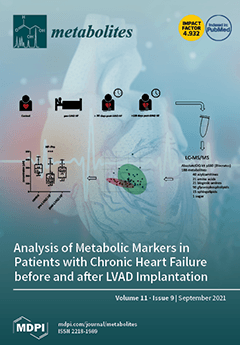To avoid the widespread resistance of commercial fungicides, new broad-spectrum botanical fungicides need to be developed. In previous bioactive screening assays, extracts of
Artemisia ordosica Krasch. (
A. ordosica) had highly antifungal activities, but the responsible phytochemicals were unidentified. In this study,
[...] Read more.
To avoid the widespread resistance of commercial fungicides, new broad-spectrum botanical fungicides need to be developed. In previous bioactive screening assays, extracts of
Artemisia ordosica Krasch. (
A. ordosica) had highly antifungal activities, but the responsible phytochemicals were unidentified. In this study, active compounds of
A. ordosica extracts were identified using a bioassay-guided method, and antifungal assays were performed in vitro and in vivo. The bioactive compounds were dissolved in petroleum ether, and the best antifungal fraction contained four compounds: trans-dehydromatricaria ester (TDDE), 7, 4-demetylnringenin, capillarin, and stearic acid. Among them, TDDE exhibited the highest antifungal activity against six pathogenic fungi and five bacteria. It exhibited significant fungicidal activity against
Thanatephorus cucumeris and
Botrytis cinerea with EC
50 values of 0.464 μg/mL and 1.4 μg/mL, respectively. The living tissue bioassay results showed that the relative protection effects (RPE) of TDDE on tomato leaves, tomato fruit, and strawberry leaves infected with
B. cinerea reached 76.78%, 86.2%, and 80.89%, respectively. In pot experiments, the RPE on tomato and strawberry plants infected with
B. cinerea reached 84.11% and 96.37%, respectively. Morphological and physiological examination showed that TDDE had significant inhibitory effects on mycelial growth, including increased top offshoot, contorted hyphal tips, and extravasated cytochylema. Meanwhile, bactericidal activities of TDDE were significantly higher than kanamycin and streptomycin in five bacteria, and the plant tissue experiments further demonstrated that it had an 88.31% RPE on walnut leaves infected with
Xanthomonas campestris pv.
jugiandis, 72.18% RPE on potato infected with
Erwinia carotovora subsp.
carotovora, and 82.50% RPE on kiwifruit branches infected with
Pseudomonas syringae pv.
actinidiae. The active compounds isolated from
A. ordosica in this study show great potential value for developing broad-spectrum fungicides, and also provide an important way to identify and isolate new bioactive products from medicinal plants.
Full article






